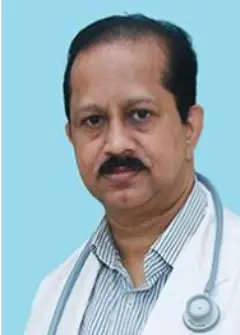Gout: Interest, Challenge and Indian Perspective

Professor of Medicine and Chief of Rheumatology KMCT Medical College, Calicut, Kerala, India
Gout is not traditionally a trending Rheumatic disease. What interested you to dive deep into the world of crystal arthropathy?
There are many reasons.
Gout is the most common inflammatory arthritis-affecting humans in the modern world. The prevalence and incidence are rising across the globe. Despite the relatively clear understanding of the etiopathogenesis of hyperuricemia and gout, and decades of experience with urate-lowering therapies, gout remains a form of arthritis that is very poorly managed by primary care doctors and other specialists.
I noticed that in Kerala the prevalence of gout seems to be higher than what is believed earlier. Early diagnosis and correct therapy can dramatically change the outcome of the disease in these patients. However, patients’ compliance is found to be very low. As the initial attacks are often short lived with long asymptomatic periods, many patients are not willing to take medications long term. I found that improving the awareness about the disease among doctors and patients can make a significant difference in the long-term outcome. Over a period of time I understood that, it is a common and important disease for learning, treating, and researching in rheumatology.
What is the future of crystal arthropathy in diagnostics and therapeutics?
In the last decade, joint USG and DECT Scans have markedly increased the diagnostic accuracy of crystal-induced arthritis in day-to-day clinical practice. The classical double contour sign and snowstorm appearance of synovial fluid are highly suggestive of gout. Tophi and erosions can also be picked up in the joint USG. DECT is the most exciting image advance in the recent years easily differentiating urate and calcium crystals.
Even though compensated polarized light microscopy of synovial fluid or tophi is the gold standard investigation for identification of crystals, newer modalities like lens free microscopy and point of care Raman spectroscopy are also found to be useful.
In the therapeutics, many newer drugs are available abroad and many others are in the pipeline. However, only Topiroxostat and SGLT2 inhibitors are available in India.
Any differences you have noticed in Indian patients with crystal arthropathy which you want to convey to our readers.
There are 3 groups of gout patients exist in India The young onset, the older males, and post-menopausal females.
The young onset are having symptoms below 30 years of age, oligo or polyarticular in onset, often have a positive family history. This contributes 15-20% gout in India.
The commonest verity (75-80%) is the older males with monoarticular onset, often associated with metabolic syndrome. Other comorbidities like CKD, CHF may also accompany
The third group is the post-menopausal females (3-5%) often with polyarticular onset with no family history, absence of metabolic syndrome, sometimes associated with comorbidities like CKD
What are the tips you would like to share for youngsters who have passion towards crystal arthropathy?
Often deemed a “poor sibling” of chronic joint pathologies like rheumatoid arthritis and spondyloarthrtis, crystal induced arthritis was never be a focus of attention to the rheumatology community. Some of the patients with chronic gout need expert rheumatology care, especially who are with refractory disease or specific settings like major organ transplantation or chronic kidney disease. Rheumatologists can provide intensive, evidence-based care, so that even refractory, difficult-to-treat cases of gout become manageable. For the young rheumatologists it will be a good, unexplored disease for research
Your take on crystal arthropathy other than Gout- Are we all missing it?
With the availability of polarized microscopy, USG and DECT, Calcium pyrophosphate dihydrate disease is increasingly diagnosed in our country also.
However, Basic calcium phosphate crystal arthropathy is often missed or mis diagnosed as the newer imaging modalities are not standardized for this disease and polarizing microscopy is not useful.
Suggested reading
- Paul BJ, James R. Gout- An Asia Pacific update : International journal of Rheumatic diseases 2017;20:407-416
- James R, Paul BJ. New and emerging therapies in gout. Rheumatol & Autoimmun. 2023;1-8.

